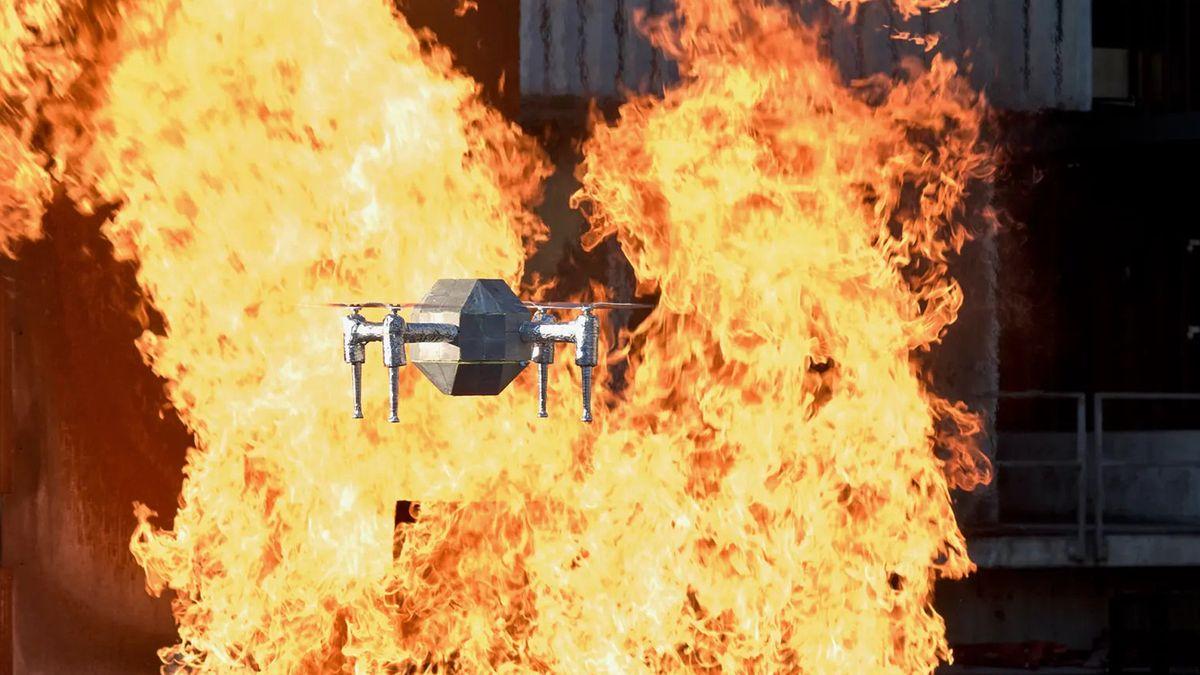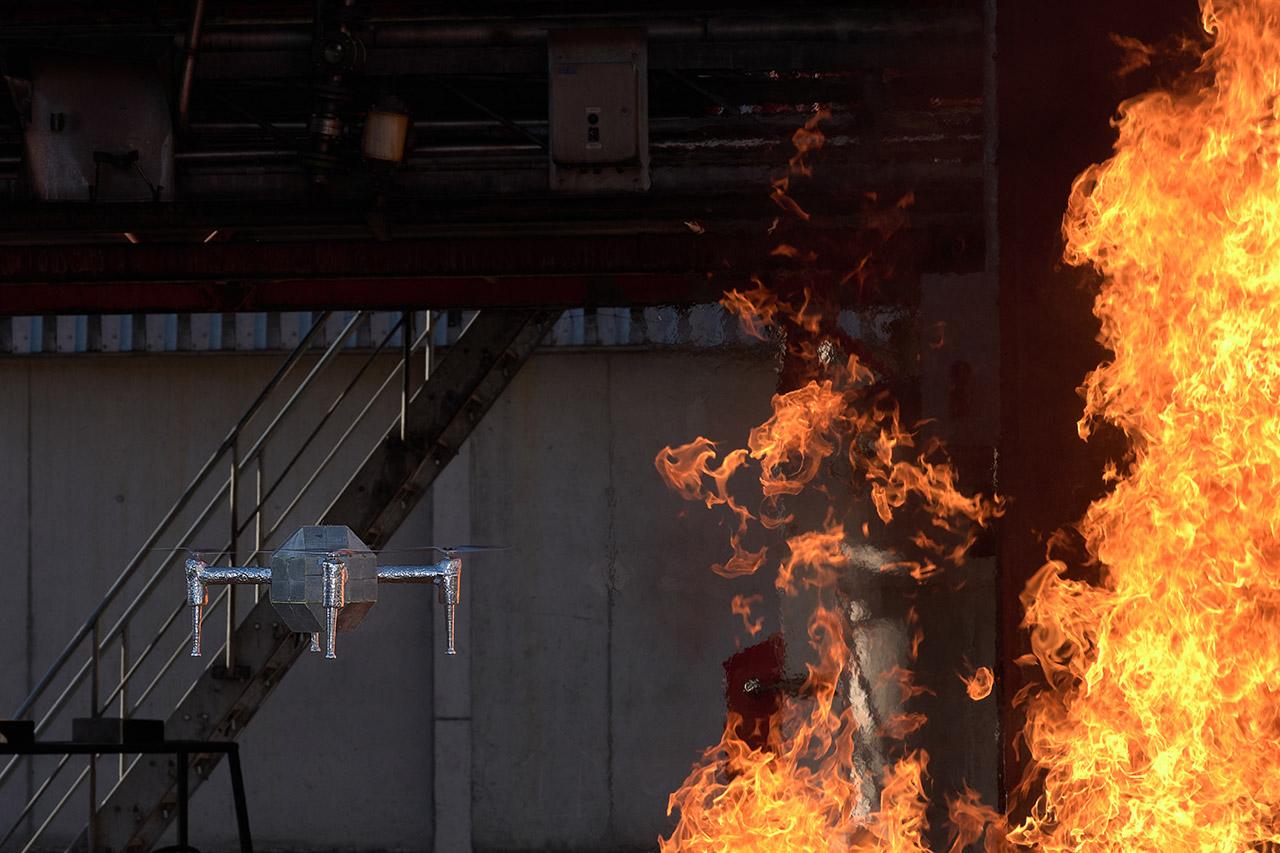A team of researchers from Imperial College London and The Empa Research Institute are working to build a fire-resistant drone. The new drone, designed to survive for long periods of time in a raging fire, could provide vital reconnaissance services for firefighters. Called the 'FireDrone', the currently experimental drone is said to withstand temperatures of 392 ºF (200 ºC) for at least 10 minutes.
The 'FireDrone' was successfully tested at a firefighter training centre. Further trials are planned for the future. When it becomes available for commercial use, the drone could potentially be used to assess forest fires or explore extreme cold environments thanks to its insulating aerogel. "The application of drones is often limited by environmental factors such as temperature," Kovac said. "We are demonstrating a way to overcome this and believe our findings will help unlock the future power of drones for harsh environments," he added.
Also See: Carbon Cleaning Market Supercritical Receives Investment
Drone can also be used for forest fires

Mirko Kovac, head of Empa's Sustainability Robotics Lab and Aerial Robotics Lab at Imperial College London, said: "Before entering directly into the danger zone, firefighters naturally do not know exactly what awaits them and what challenges they will also face." But typically with house fires exceeding 1,932 ºF (1,000 ºC), even this new drone won't last very long. However, it will survive much longer than conventional drones. "To fly closer, the extreme heat generated by a fire is too much for conventional drones," said David Häusermann of Empa's Sustainability Robotics lab. "The frame melts close to the fire and the electronics give up. With commercial drones, nothing more than aerial photographs of the fire scene from a safe distance are possible," he added.
The heat resistance of the new drone, a modified quadcopter, is provided by an insulating layer of aerogel around its electronics. This provides excellent, albeit limited, protection for its vital components. This specialised gel was designed for the project. It consists mainly of polyimide plastic, silica and glass fibres, with air pockets interspersed throughout. The glass fibres offer structural support, while the outer aluminium layer effectively wicks heat away from the drone. The 'FireDrone' is equipped with a battery, flight controller, video transmitter, radio receiver and various sensors such as an optical camera, infrared camera and CO2 sensor. Its purpose is to provide real-time data to emergency responders when entering a burning building. The data includes the location of fire sources, dangerous areas to avoid and trapped persons. In addition, the CO2 sensor creates a cooling effect inside the drone as the gas vaporises.





No comments yet for this news, be the first one!...